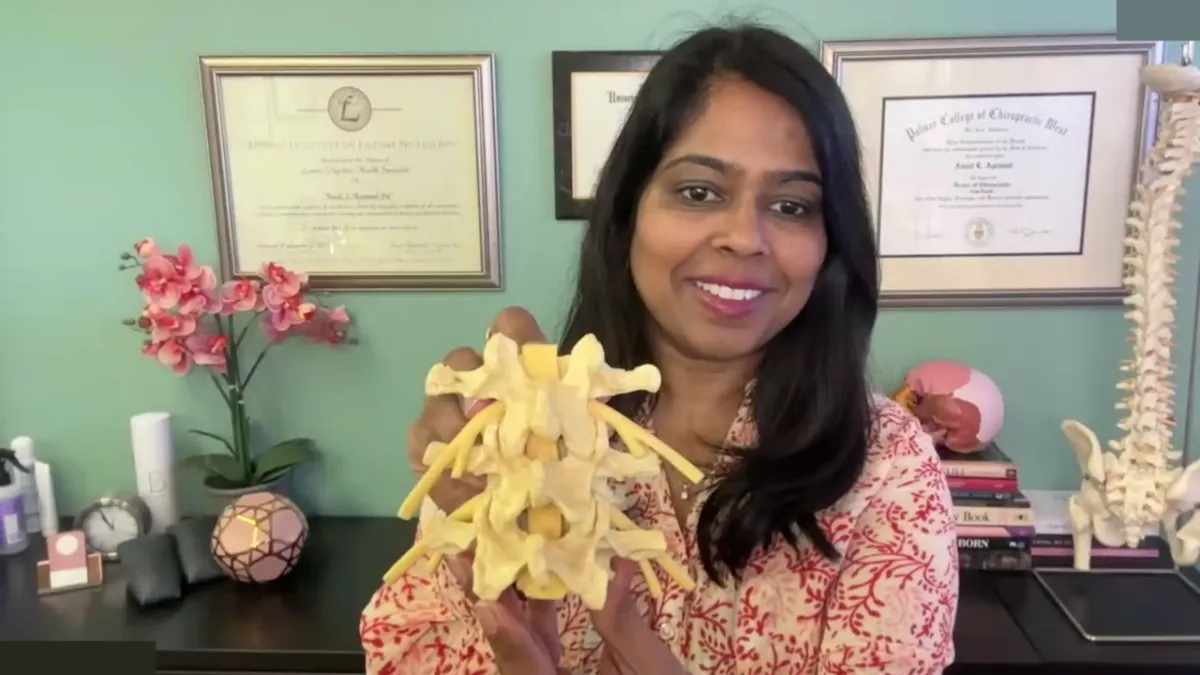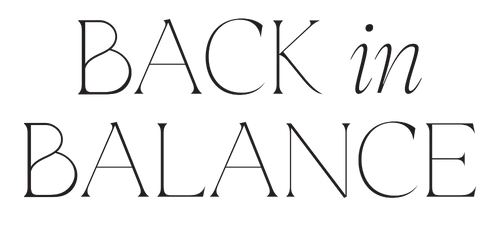

Apple Trackpad

Apple Keyboard


Are you wanting to get pregnant or expecting a little one? Get out free checklist today. This Ultimate Fertility and Pregnancy Checklist gives you everything you need to know for optimized health.

Unlock the secrets to managing stress with our Overcoming Stress Mini Course. Learn how to leverage your nervous system to reduce anxiety and improve well-being. Join today for quick, effective stress relief strategies. Perfect for busy individuals seeking a healthier, stress-free life.

Are you wanting to get pregnant or expecting a little one? Get out free checklist today. This Ultimate Fertility and Pregnancy Checklist gives you everything you need to know for optimized health.

Do you ever feel stiff and sore from sitting all day? If so, download our printable bookmark and walk through the 10 point ergonomic checklist to help you get back in balance from anywhere!





Why Your Neck Pain Might Not Be Coming From Where You Think
Have you ever felt pain on one side of your neck, only to have your chiropractor work on a completely different area? You're not alone—and there’s a reason for that.
Hi, I'm Dr. Anjali, founder of Back in Balance. As a non-cracking, non-popping chiropractor and integrative functional medicine specialist, I help families and workplaces move well, eat well, and live well. Today, we’re talking about misalignments, muscle compensation, and why pain doesn't always show up where the problem starts.
What Is a Spinal Misalignment?
Some chiropractors refer to them as subluxations. Most often, a misalignment involves a rotational component. Because we have muscles attaching to both sides of the spine, one side becomes overly tight while the other becomes overstretched. That imbalance shifts how your entire spine compensates.
So where you feel pain? Not always where the issue began. Your body is great at adapting, which means symptoms often show up in secondary areas.
Think of Your Spine Like a Rope
Imagine holding both ends of a rope. If you twist one side and keep the other fixed, the entire rope experiences stress. Let go of one end and gravity helps it realign. Your spine is similar: misalignments create tension throughout the chain. Even a small twist can affect far-off areas.
That’s why chiropractors don’t just treat the area that hurts. We assess the whole spine—pelvis, low back, mid back, and neck—to uncover the true source of discomfort.
Everyday Life = Long-Term Compensation
Have you ever sprained your ankle and walked differently for a while? Eventually, that change might cause pain in the other leg. Your body adapts in amazing ways, but over time, those changes can create misalignments elsewhere.
Kids are especially good at bouncing back from injury, but if they never fully recover their normal patterns, those small changes can build into chronic discomfort later in life.
Misalignment Doesn’t Always Equal Pain
You might be living with structural imbalances and not even know it. That’s because pain is often a lagging indicator. By the time you feel something, the misalignment has likely been there a while. That’s why regular chiropractic check-ins can help you stay ahead of symptoms.
A 360° View for Long-Term Relief
In my practice, I take a full-body approach. When someone comes in with left-sided low back pain, for example, I evaluate their entire spine—not just the painful spot. The source of pain might be the side of muscle contraction or overstretch, and there’s no one-size-fits-all answer.
By assessing how your body has adapted, I can help restore balance and prevent small issues from becoming bigger disruptions in your life.
Ready to Find the Real Cause of Your Pain?
If you're in the Bay Area and looking for someone to help identify the root of your symptoms and restore balance, I’d love to chat. Book a discovery call .
Not local? Reach out and I’ll help you find a provider who takes a similar approach.

Why Your Neck Pain Might Not Be Coming From Where You Think
Have you ever felt pain on one side of your neck, only to have your chiropractor work on a completely different area? You're not alone—and there’s a reason for that.
Hi, I'm Dr. Anjali, founder of Back in Balance. As a non-cracking, non-popping chiropractor and integrative functional medicine specialist, I help families and workplaces move well, eat well, and live well. Today, we’re talking about misalignments, muscle compensation, and why pain doesn't always show up where the problem starts.
What Is a Spinal Misalignment?
Some chiropractors refer to them as subluxations. Most often, a misalignment involves a rotational component. Because we have muscles attaching to both sides of the spine, one side becomes overly tight while the other becomes overstretched. That imbalance shifts how your entire spine compensates.
So where you feel pain? Not always where the issue began. Your body is great at adapting, which means symptoms often show up in secondary areas.
Think of Your Spine Like a Rope
Imagine holding both ends of a rope. If you twist one side and keep the other fixed, the entire rope experiences stress. Let go of one end and gravity helps it realign. Your spine is similar: misalignments create tension throughout the chain. Even a small twist can affect far-off areas.
That’s why chiropractors don’t just treat the area that hurts. We assess the whole spine—pelvis, low back, mid back, and neck—to uncover the true source of discomfort.
Everyday Life = Long-Term Compensation
Have you ever sprained your ankle and walked differently for a while? Eventually, that change might cause pain in the other leg. Your body adapts in amazing ways, but over time, those changes can create misalignments elsewhere.
Kids are especially good at bouncing back from injury, but if they never fully recover their normal patterns, those small changes can build into chronic discomfort later in life.
Misalignment Doesn’t Always Equal Pain
You might be living with structural imbalances and not even know it. That’s because pain is often a lagging indicator. By the time you feel something, the misalignment has likely been there a while. That’s why regular chiropractic check-ins can help you stay ahead of symptoms.
A 360° View for Long-Term Relief
In my practice, I take a full-body approach. When someone comes in with left-sided low back pain, for example, I evaluate their entire spine—not just the painful spot. The source of pain might be the side of muscle contraction or overstretch, and there’s no one-size-fits-all answer.
By assessing how your body has adapted, I can help restore balance and prevent small issues from becoming bigger disruptions in your life.
Ready to Find the Real Cause of Your Pain?
If you're in the Bay Area and looking for someone to help identify the root of your symptoms and restore balance, I’d love to chat. Book a discovery call .
Not local? Reach out and I’ll help you find a provider who takes a similar approach.
LOCATION
949 Sherwood Ave. #100
Los Altos, CA 94022
HOURS
Sunday 12pm - 4 pm
Monday 10am - 4pm
Tuesday 1pm - 4pm
Wed-Fri 10am - 4pm
Saturday Closed
CONTACT
© Back In Balance 2025 | FAQs | Terms & Conditions | Privacy Policy | Site Credit
©2025 Back In Balance Health. All Rights Reserved. – WEBSITE By: Danielle Damrell Creative Collective, Inc.

